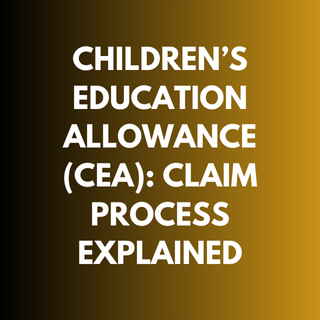
The Children’s Education Allowance (CEA) is a valuable benefit offered to central government employees to support the education of their children. This allowance ensures that the financial burden of schooling, including tuition fees and other related expenses, is reduced. Over the years, the claim process has been simplified to make it more accessible and employee-friendly. This article provides a step-by-step guide to claiming CEA, the latest updates in the process, and tips for avoiding common mistakes.
What Is the Children’s Education Allowance?
The CEA is a financial assistance scheme provided to central government employees. It covers expenses related to the education of their children, up to a maximum of two children. The allowance includes:
- Tuition fees
- Books and stationery
- Uniforms
- Transportation fees (if applicable)
As of now, the maximum reimbursement per child is Rs. 27,000 per year. Employees can also claim a hostel subsidy if their child resides in a hostel away from home, with a limit of Rs. 81,000 per year.
Eligibility Criteria
To claim the Children’s Education Allowance, you must meet the following conditions:
- Employment Status: You must be a regular central government employee.
- Number of Children: The allowance is applicable for up to two children.
- School Affiliation: The child must be enrolled in a recognized school.
- Expense Type: Only expenses mentioned in the scheme’s guidelines are reimbursable.
Latest Changes in the Claim Process
The government has introduced several updates to simplify and digitize the process. These include:
- Self-Certification: Employees no longer need to provide receipts for tuition fees, books, and uniforms. A self-declaration form is sufficient.
- Online Submission: Most departments now accept online claims through official portals, reducing paperwork.
- Revised Claim Deadlines: Employees must submit claims within a stipulated time, usually by the end of the financial year.
- Digital Records: Many departments encourage employees to upload digital copies of required documents for faster processing.
Documents Required
Although the self-certification process has simplified documentation, some records are still necessary for verification:
- Self-Declaration Form: This form includes details about the child’s education and the claimed amount.
- Bonafide Certificate: Issued by the school, confirming the child’s enrollment.
- Fee Structure: A general fee structure from the school for reference.
- Bank Account Details: To ensure reimbursement is credited to the correct account.
Step-by-Step Guide to Claiming CEA
Follow these steps to successfully claim your Children’s Education Allowance:
Step 1: Collect Required Information
Gather basic details about your child’s school, including the academic year, fee structure, and any other relevant information.
Step 2: Fill Out the Self-Declaration Form
Most departments provide a standardized self-declaration form. Fill it with accurate details, including:
- Your name and designation
- Your child’s name and class
- The amount being claimed
- School name and address
Step 3: Attach Supporting Documents
Although receipts are not mandatory, attaching documents like the bonafide certificate or a copy of the fee structure adds credibility.
Step 4: Submit the Application
Submit your claim form and supporting documents either online or at your department’s administrative office. Make sure to note the deadline.
Step 5: Track Your Claim
If your department uses an online system, track the status of your claim. This ensures that you can address any issues promptly.
Common Mistakes to Avoid
- Missing Deadlines: Ensure you submit your claim before the end of the financial year.
- Incomplete Forms: Double-check all details in your self-declaration form.
- Wrong Documents: Ensure that all supporting documents are up-to-date and relevant.
- Claiming Excess: Do not claim more than the permissible limit, as it can lead to rejection.
Benefits of the New Process
The latest updates in the CEA claim process offer several advantages:
- Time-Saving: The self-certification method eliminates the need for gathering and submitting numerous receipts.
- User-Friendly: Online portals make submission and tracking easier.
- Transparency: Digital records and real-time tracking ensure transparency in processing claims.
Frequently Asked Questions (FAQs)
1. Can I claim CEA for more than two children?
No, the allowance is limited to two children. Exceptions may apply in case of twins or multiple births after the first child.
2. What happens if my child changes schools mid-year?
You can still claim the allowance, but you need to provide details for both schools.
3. Is the CEA taxable?
No, the Children’s Education Allowance is exempt from income tax under Section 10 of the Income Tax Act.
4. Can both parents claim CEA if they are central government employees?
No, only one parent can claim the allowance for a particular child.
Tips for a Hassle-Free Claim
- Stay Updated: Regularly check for updates on CEA policies from official notifications.
- Maintain Records: Keep digital copies of all documents for future reference.
- Use Online Portals: If your department offers an online claim system, use it for faster processing.
- Seek Help: If you face issues, contact your department’s administrative office for guidance.
Conclusion
Claiming the Children’s Education Allowance is now more straightforward and employee-friendly, thanks to recent updates. By following the steps outlined in this guide, you can ensure a hassle-free claim process. Always stay informed about the latest changes and adhere to deadlines to make the most of this valuable benefit.
Read about House Rent Allowance (HRA)
If you found this guide helpful, share it with your colleagues to spread awareness about the streamlined CEA claim process.
Leave a Reply